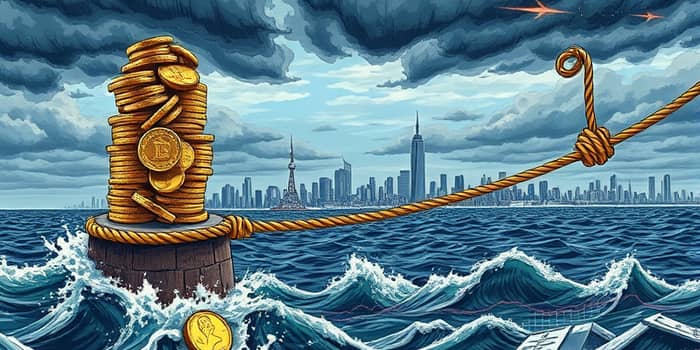
As the U.S. approaches another inevitable showdown over its borrowing limit, the stakes extend far beyond partisan politics, threatening the very bedrock of economic confidence.
The debt ceiling is the statutory limit on the total amount the federal government may borrow to honor obligations such as Social Security, Medicare, military salaries, and interest on existing debt. Established under the Second Liberty Bond Act of 1917, this hard debt cap mechanism was designed to centralize war financing and impose a check on congressional spending.
Before 1917, each issuance of debt required individual approval, creating delays in funding critical war efforts. The aggregate ceiling granted the Treasury operational flexibility while preserving congressional oversight, but in the modern era it has evolved into a political flashpoint.
Since 1960, Congress has raised or suspended the debt limit 78 times, often under the pressure of looming default. Key episodes include December 2011, when brinkmanship led to the first-ever downgrade of U.S. debt by S&P, and the Fiscal Responsibility Act of June 2023, which suspended the ceiling until January 2, 2025.
Amid these confrontations, federal deficits have persisted annually since 2002, driving national debt to approximately $36.22 trillion by February 2025 and underscoring the debt ceiling’s role as a recurring political lever.
When the ceiling is reached, the Treasury resorts to extraordinary measures—ingenious but finite accounting tools—to continue payments. These maneuvers, however, only delay the inevitable X-date, when government coffers run dry.
If no action is taken by that deadline, the U.S. would default, unable to meet its legal obligations. This could trigger missed payments on Treasury securities, Social Security checks, Medicare benefits, and military salaries—an event that experts warn would unleash deep economic repercussions across labor markets and consumer confidence.
According to the Council of Economic Advisers, a protracted default “would likely lead to severe damage to the economy, with job growth swinging from robust gains to losses numbering in the millions.” Even the threat of default spawns market turmoil, surges in bond yields, and a flight from U.S. assets.
Beyond domestic upheaval, U.S. debt serves as the world’s preeminent safe asset, underpinning global funding markets. A loss of confidence could reverberate internationally, as institutions recalibrate risk and central banks reassess reserve allocations.
During past standoffs, implied volatility indexes spiked, equity markets wobbled, and the dollar experienced downward pressures. Institutional investors, from pension funds to sovereign wealth funds, may demand higher yields or seek alternative refuges, challenging America’s fiscal credibility.
In extreme scenarios, default-induced turmoil could stall global trade, elevate commodity prices, and dampen emerging-market growth. The ripple effect would threaten the financial stability of vulnerable economies and imperil long-term development financing.
To break this cycle of brinkmanship, policymakers and reform advocates propose a range of solutions:
Constitutional scholars also cite the 14th Amendment’s guarantee that “the validity of the public debt of the United States...shall not be questioned,” arguing for the ceiling’s abolition or reinterpretation to avert default risk.
Regardless of the path chosen, any reform must balance fiscal discipline with the imperative to safeguard global financial stability. The debate’s outcome will shape not only U.S. economic policy but the broader architecture of international finance.
Ultimately, the debt ceiling debate is more than a fiscal technicality—it is a test of governance, responsibility, and foresight. Citizens, investors, and global partners alike watch as leaders face a crucial crossroads: succumb to recurring gridlock or muster swift and decisive legislative action to bolster trust and secure economic prosperity.
As the next deadline approaches, stakeholders must engage constructively, bridge partisan divides, and champion solutions that ensure America’s creditworthiness remains unchallenged. Only through sustained dialogue and informed policymaking can we avert crisis and foster a resilient, stable financial future.
References













